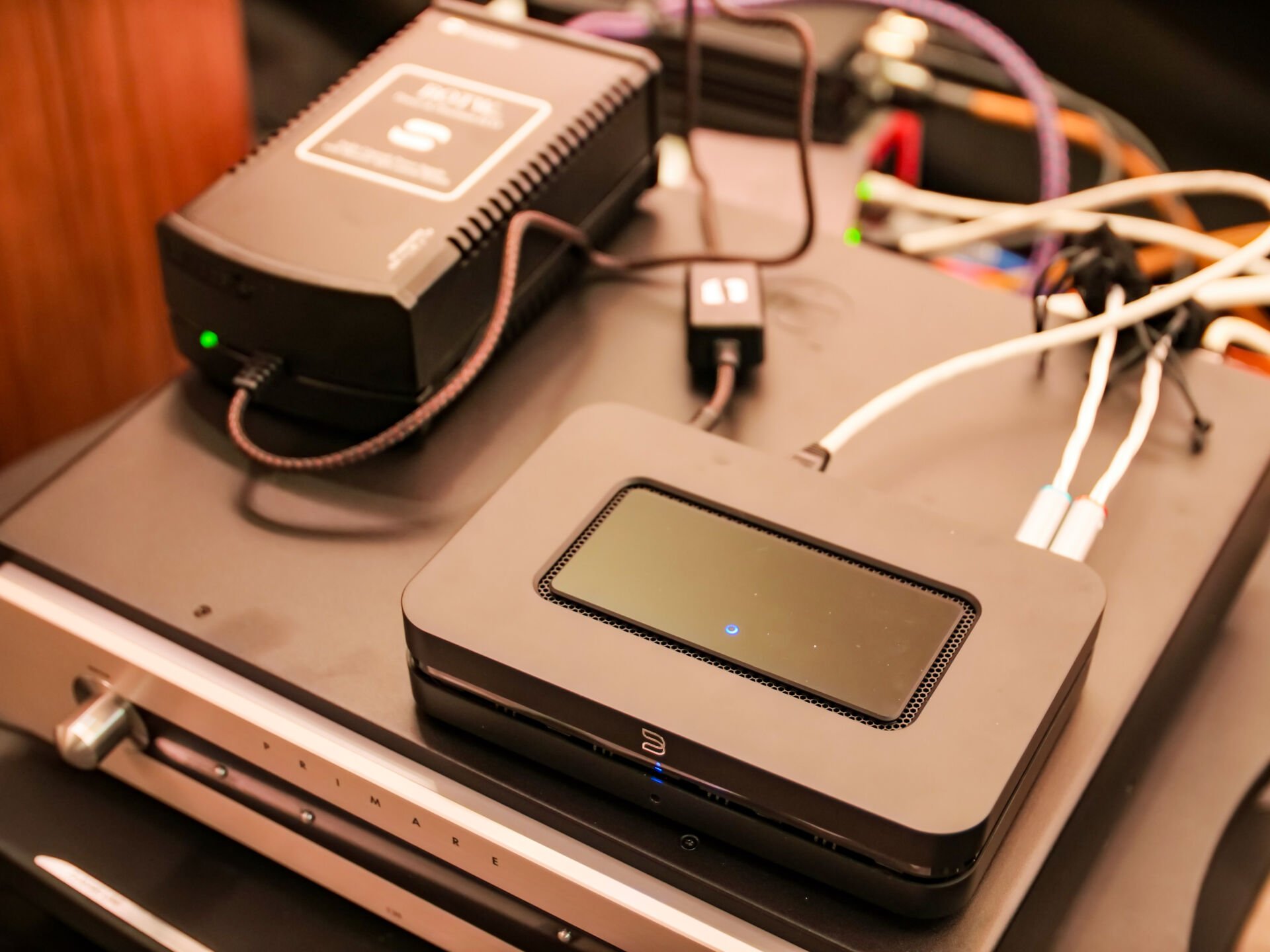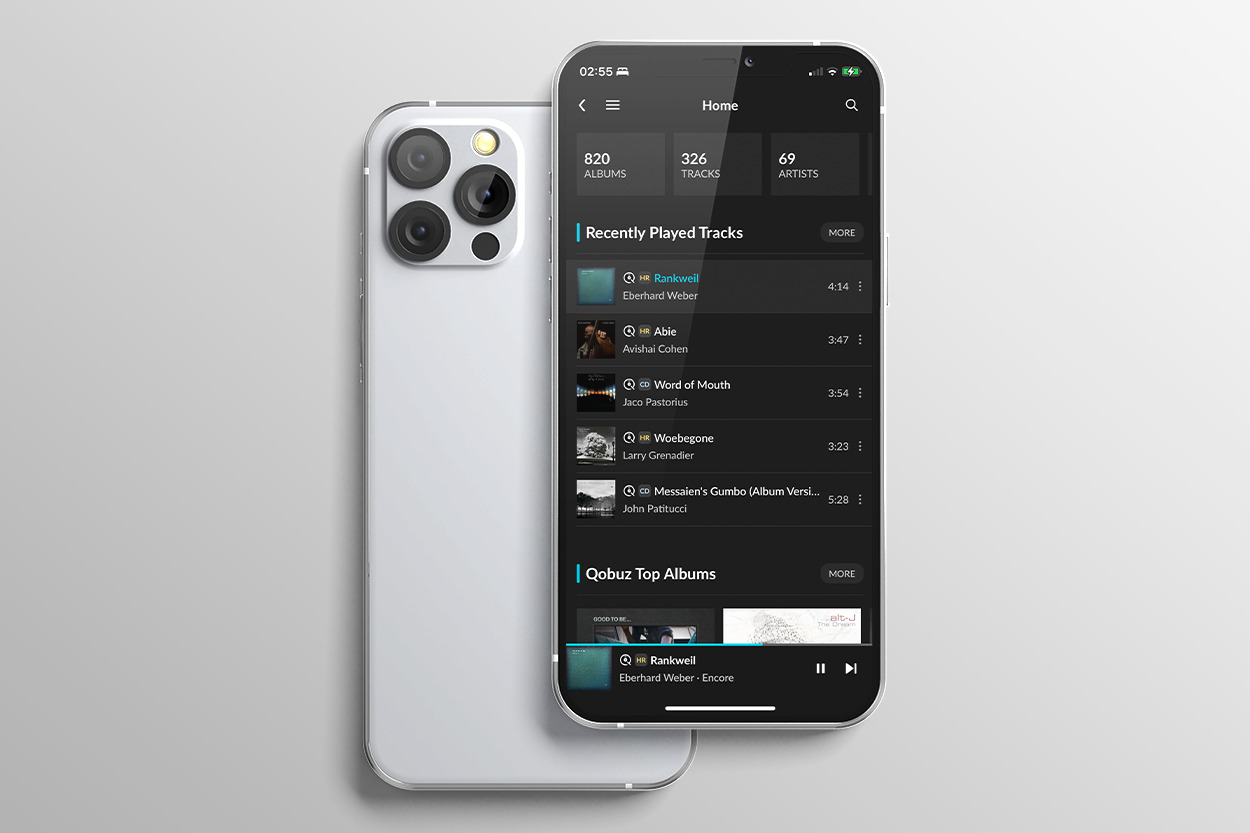

Intro
Contents
The Volumio Primo is a streamer with DAC in an interesting segment of the market. Audio lovers, prick up your ears, because the Primo is surprisingly good.
Volumio’s first product was the black box design Primo. This is the new Primo, in the same nice-looking design that fits the Integro.
The Primo can be connected to your home network either with an Ethernet cable or WiFi. Volumio recommends a wired connection for sound quality, and in the Volumio software you can disable WiFi. That is a nice feature.
A bluetooth option is present for those who want to play music via bluetooth with a phone, and bluetooth can also be turned off in the Volumio software if you do not use it.
Volumio makes its own software for streaming music. Besides integration with Spotify, Qobuz, Tidal and Tidal connect, the software includes plugins for Soundcloud, Mixcloud, Pandora, YouTube Music and Bandcamp. You can install these in Volumio’s menu. The Primo is also Roon Ready. Should you prefer to use Airplay, you also have this option. The only option missing on the list is Chromecast.
At the back, you will find two USB ports to connect a USB stick or hard disk with music files, an Ethernet port for a network connection and a microSD card slot to expand the Primo’s internal memory and use it to store music files, for example.
The HDMI port is an outgoing port for connecting a touchscreen or monitor on which the Volumio software is displayed. The USB port can also be used to attach a mouse or keyboard to the Primo. In practice, most users will choose to control the streamer via the Volumio app or via a browser.
To access the Primo using a browser, key ‘primo.local’ into a browser’s address bar. A description of the Volumio software can be found in the review of the Integro. This is identical for the Primo, as are some notes.
An SPDIF output is present to connect an external DAC with a coax cable. The USB ports can also be used to interface with a DAC.
The most interesting thing about the Primo is the DAC, though. A set of RCA or XLR outputs is available for an analogue connection to a preamplifier or integrated amplifie. The Primo does have a balanced design on XLR, so using XLR is the preference if your amplifier has XLR inputs. A good move from a marketing point of view, it differentiates the Primo from its main competitors.
For us, it is clear that the Primo’s main competitor is the popular Bluesound Node. We compared the Primo and the Bluesound Node.









Hello Jaap, I asked Martijn the following question but he probably is quite busy haha.
First I’m really enjoying the really great, objective (what I can see..) and humorfull review sessions you, Yung and Martijn and others make. Thanks for that!
The question was that if I want to connect a top CD transport with Tentlabs reclocking to the Primo I probably need the Mutec mc3 USB unit to convert from spdif to USB. But what is your estimations. Will that combo beat a Metrum Onyx Dac1 equiped DAC?
And did you ever compared an Chord Qutest to the Onyx?
Fyi. The digital sound I’m searching for is analog. I’m an analog guy with an heavy analog frontend with eat e-glo-S, Townshend Rock2 modified with seismic pods and Dr Fuss PS with Decca Super gold and Garrott P77I moving iron cartridges (Yung will probably like those also haha..)
Thanks upfront for a response and keep up doing the good work to give objective inside what’s going on in the high-end world without losing the fun and focus on the emotion in the musique..
I answered your question on the Dutch version of this article. See: https://alpha-audio.net/nl/review/volumio-primo-bravo-bravissimo/#comment-24909
Thanks for the reply. You used the Farad10 but the Farad3 should be sufficient too , to feed the Primo I suppose…? Or as always the more power the better if the delivery afcourse is equally fast ..
Hallo Jaap, although you experimented with the Rigol lab power supply on the Primo, you never commented how the Rigol on the Primo compared to the Farad10 or Pixler DC statement?
You are correct! It’s hard to compare, for I didn’t really A / B compare them. But fact is: the Rigol produced VERY decent results. Not as good as the Farad if I try to compare from memory. I guess the Farad is more smooth… Know that the Rigol is actively cooled and NOT silent at all. :-).